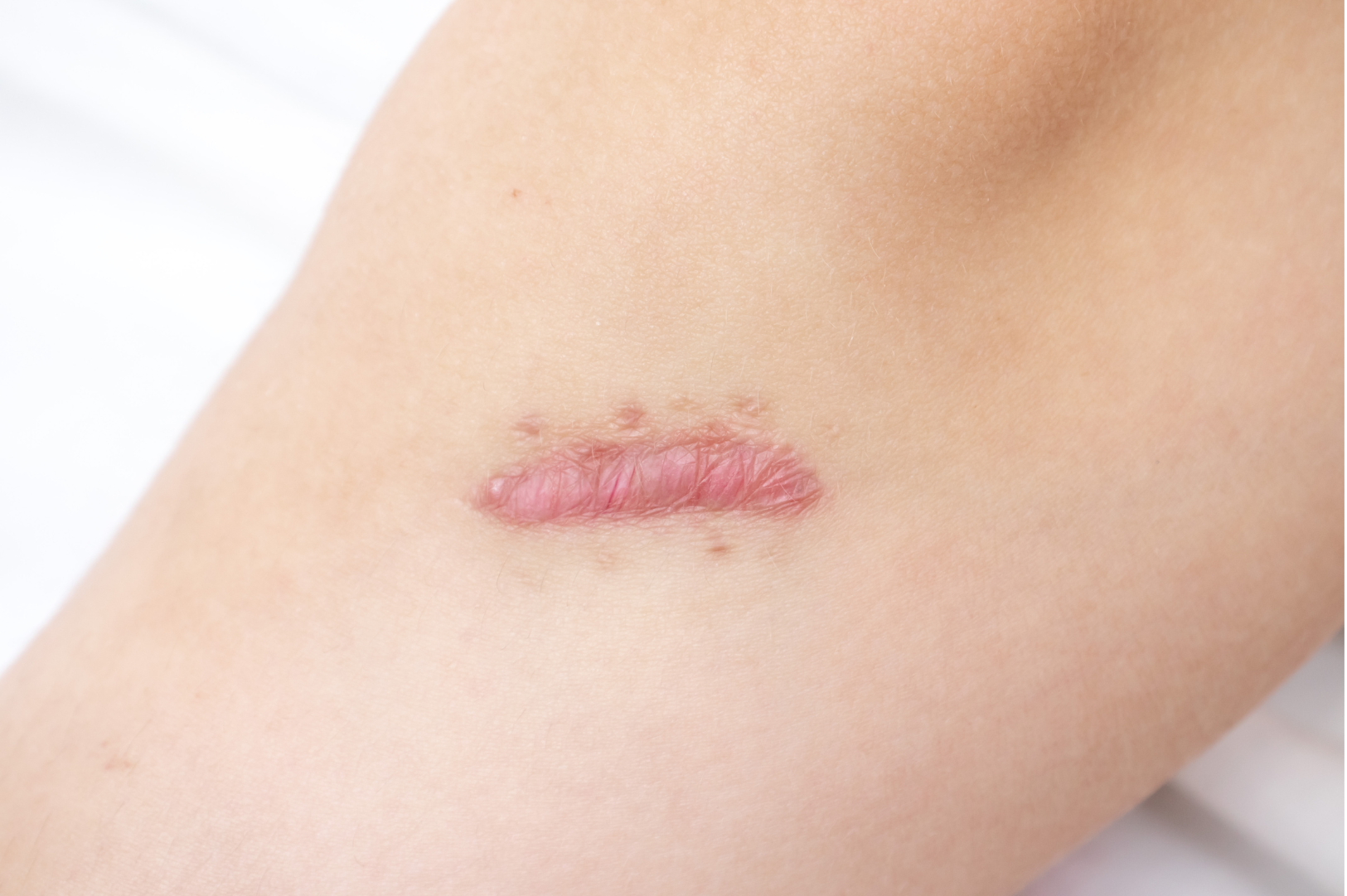
Keloids are scars on your skin that have healed after an injury. It is a thick raised scar that usually appears on earlobes, shoulders, cheeks, or chest. Scars that form as a response to any burn, wound, abrasion, or cut are a part of your body's natural healing process. These usually grow smaller and fade over time; however, the skin may overreact for some, forming larger scars such as keloids. Although keloids do not cause pain or discomfort, they are often a cause of concern for aesthetic reasons. Treatment options may include home remedies, medications, injectables, laser therapy, or surgical intervention.
This article offers a comprehensive guide to keloids, including their causes, symptoms, diagnosis, treatment, and prevention.
A keloid is a smooth, glossy, raised formation of an overgrown scar tissue or an overly aggressive healing response to a wound or injury. These scars can form on your earlobes, neck, chest, shoulders, and back. Keloids are pink, purple, or brown and may feel rubbery or firm. These scars are usually darker than the surrounding skin and may gradually enlarge than the wound that caused them.
The exact cause of keloid is not known. Many experts believe it is likely a dysfunction of the wound-healing process. Collagen is an essential protein in your body that forms the binding and building blocks of tissues like skin, hair, nails, muscles, tendons, ligaments, and cartilage. It is an essential component during the wound healing process. However, keloid scars are formed when your body produces too much collagen.
Keloids are noncancerous and noncontagious growths that can be triggered by any kind of injury, including:
Several risk factors can also predispose you to the formation of a keloid scar. These include:
An overreacting scar tissue forms a keloid that may take weeks or months to develop fully. Keloids can present with the following characteristics:
Keloids can be easily diagnosed by an experienced dermatologist (a doctor specializing in diagnosing and treating conditions related to the skin, hair, and nails) who will evaluate your symptoms and record your medical and family history. The doctor will physically examine the keloid scar to assess its shape, size, appearance, and growth pattern.
Furthermore, your doctor may order a skin biopsy (a tissue sample is taken and studied under a microscope) test to rule out other skin growths or malignancies (the ability to become cancerous).
Treating keloid scars can be challenging, and these may grow back even after surgical removal, or you may notice new ones developing. Your dermatologist can suggest one or more combinations of treatments to treat keloids. These include:
Whenever conservative methods fail to work, your dermatologist may recommend medical treatment. These have been discussed below:
Keloids have a high recurrence rate, irrespective of the treatment option used to remove them. However, you may follow some tips to reduce your likelihood or risk of developing a keloid scar.
A keloid is a smooth, shiny, raised scar usually larger than the actual wound or injury. It appears darker than the surrounding skin. Though it may not be cancerous, it is challenging to treat a keloid due to its high recurrence rate. Treatment can be possible through wound care, home remedies, or medical methods like topical creams, patches, injectables, cryotherapy, laser therapy, radiation, or surgical intervention.
Consult your dermatologist if you notice any scar. They can help determine the best course of action for you.
https://www.ncbi.nlm.nih.gov/pmc/articles/PMC8007468/